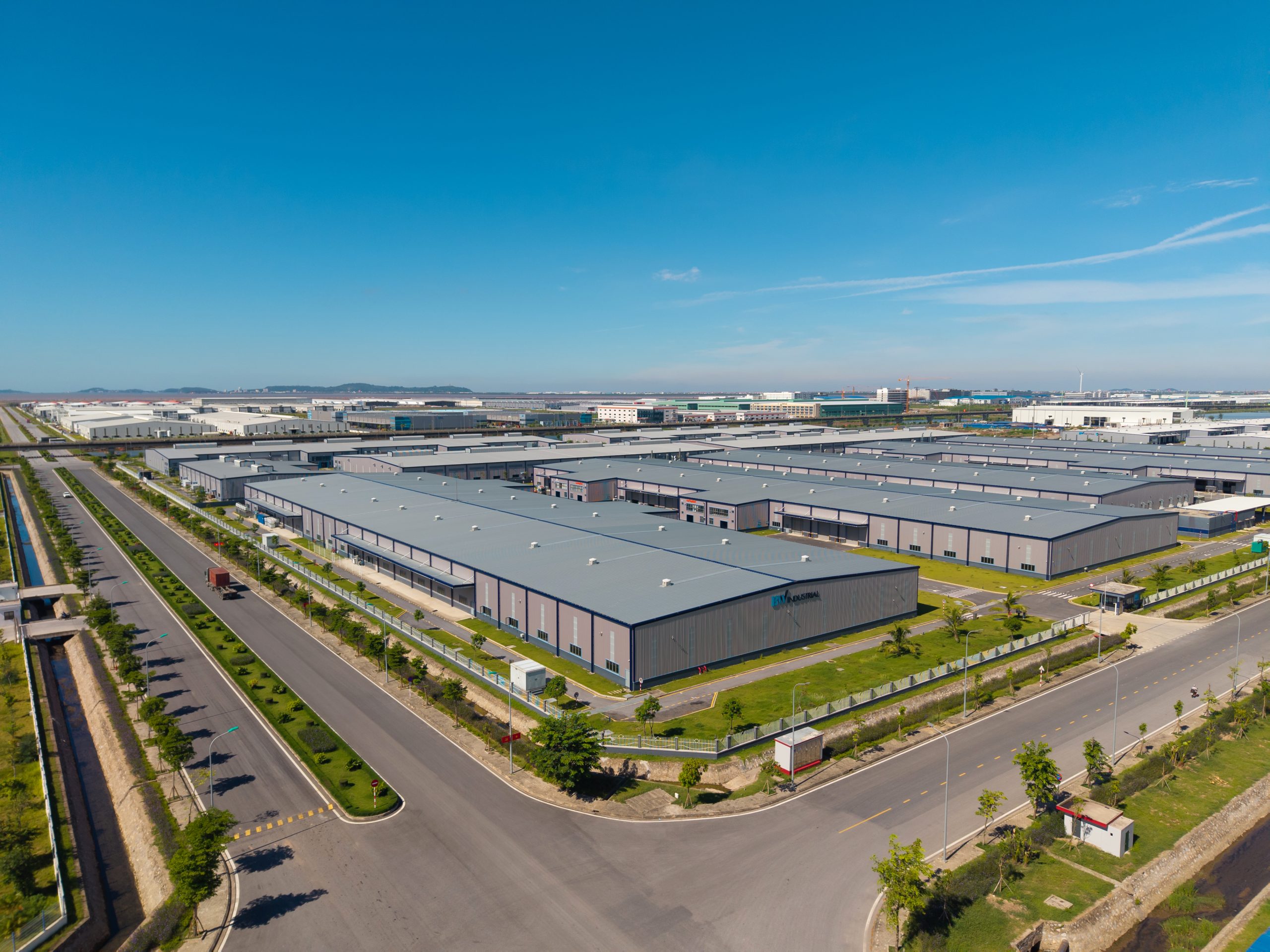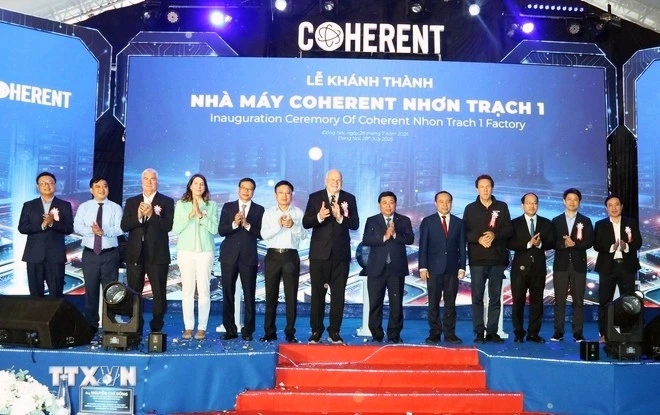商業環境
Vietnam in Focus: How the Country Stands Out among its ASEAN Neighbors
1 7 月, 2024
Vietnam has emerged as a prominent investment destination within the Association of Southeast Asian Nations (ASEAN). Its rapid economic growth, favorable demographics, and commitment to economic reforms have attracted significant foreign direct investment (FDI) inflows in recent years.
Vietnam’s supply chains have undergone substantial transformation over the past decade. Presently, supply chain realignments towards Vietnam continue, partly catalyzed by the US-China trade tensions, as an increasing number of enterprises explore opportunities in ASEAN or other markets. In the competition for investment, Vietnam has emerged as an ideal choice for businesses looking to relocate within Southeast Asia.

Vietnam shares a common border with China unlike the other countries, allowing for supply chain integration
The table below lists out some statistics on Vietnam.
| Vietnam’s Socio-Economic Development Plan 2021-2030 | |
| GDP growth | 6.5% to 7% |
| Per capital GDP by 2030 | US$7,500 |
| Ratio of processing & Manufacturing industry in GDP | 30% |
| Urbanization rate by 2030 | Over 50% |
| Life expectancy | 75 years |
| Rate of business and production households meet environmental standards | 100% |
While Vietnam has benefitted from such a supply chain shift, let’s look at how other countries compare:
Thailand: Thailand is an attractive destination for investment however its political climate such as coups, protests are some factors that need to be considered. Similar to Vietnam, Thailand depends on international trade, however its tourism industry which is one of the main drivers for growth has not fully recovered since the pandemic. Thailand is also a traditional growth engine; labor costs are higher than in Vietnam. Despite political uncertainty, Thailand has emerged as a strong contender for manufacturing. Its wins due to its strategic location, logistics connectivity, well developed infrastructure, and affordable office spaces. Thailand has a coastline of 3,148 km with over 4,000 km of waterways. Ports include Bangkok, Laem Chabang, Map Ta Phut, Ranong, Phuket, Songkhla, Sattahip, and Si Racha. These ports handle a wide range of cargo, including manufacturing goods, vehicles, and agricultural products. They also serve as important transport hubs, connecting Thailand with other countries in Southeast Asia and the rest of the world. Chinese investment dominate the Thai landscape and its relatively close proximity to China is an added bonus. As per the Logistics Performance Index, Thailand is also know for its efficient border control systems including customs.
Indonesia: Indonesia has emerged as another alternate destination for manufacturing especially in the EV and battery sectors. Its proximity to Singapore also helps in trade. However, it still needs to establish a better trade network to attract foreign investors. While its business environment is improving, its infrastructure, bureaucracy and red tape are still behind Vietnam at the moment. Indonesia and China have a complex supply chain relationship, with Indonesia being a major supplier of raw materials to China and China being a major manufacturer and exporter of final goods to Indonesia. The two countries have cooperated on various initiatives to improve their supply chain efficiency and reliability, including the establishment of free trade agreements and investment in infrastructure projects. However, there are also challenges and tensions in their relationship, such as trade disputes and territorial disputes, that can impact their supply chain operations. However, Indonesia still needs to move up the value chain. It’s islands are dispersed, making it challenges for transport routes. Some of the busiest ports in Indonesia include Tanjung Balai Karimun, Tanjung Pinang, Batam Centre Port, Tanjung Pelokweh, and Tanjung Balai Berujak. These ports serve a wide range of cargo, including container ships, bulk cargo, and oil and gas tankers. China is Indonesia’s largest trading partner, and many of these ports are important hubs for the flow of goods between the two countries.
The Philippines: The Philippines is known for its English-speaking well-educated labor force. Its BPO industry is leading in Asia. However, the country’s growth has not been as strong as Vietnam’s. While it’s known for some hi-tech industries, labor and electricity costs are much higher than Vietnam’s, while its infrastructure is still not up to Western standards. Similar to Indonesia, the Philippines has several islands spread out over the ocean, which can be challenging for transport routes. Some of the major ports in the Philippines that serve China are the Port of Manila, Port of Batangas, and Port of Subic. The quickest routes from the Philippines to China by containers ships are from Manila to Quanzhou (China), however the most frequent route is typically from Manila to Shanghai (China). However geopolitical tensions between the Philippines and China could affect trade and ties involving the islands in the South China Sea.
Malaysia: Malaysia offers a stable and well-established business environment, a diverse economy and robust infrastructure, but has different strengths such as strong intellectual property protection and a well-developed financial sector. However, costs in Malaysia are higher compared to Vietnam. While labor is skilled, labor-related costs and business costs also come at a premium. Malaysia has several major ports, including Port Klang, Port Tanjung Balai Karim, and Port Penang. These ports serve as gateways to the country and handle a significant amount of cargo and passenger traffic. Port Klang is the busiest port in Malaysia, while Port Tanjung Balai Karim is the second largest. Port Penang, on the other hand, is one of the country’s most important cargo ports, handling a significant amount of goods bound for neighboring countries. Shipping from Malaysia to China takes approximately 3 days. The Malaysian coastline (not counting the smaller islands) is 4,809 km long, made up of 1,972 km in Peninsular Malaysia, 1,035 km in Sarawak, and 1,802 km in Sabah (including Labuan).
Malaysia’s political climate is also not as stable as Vietnam’s. The present government’s relatively weak coalition with future state elections can be hindrance to its business environment.
Vietnam’s great investment destination, but requires some improvements
While Vietnam is an attractive investment destination within the ASEAN region, there are still things that are unique to and some aspects that needs to improve. For example:
Vietnam’s infrastructure. While the has invested and continues to invest in upgrading its infrastructure, Vietnam continues to depend on an inadequate road network, coupled with an outdated railway system. This inevitably results in traffic jams and the slow movement of goods. As per the World Economic Forum, Vietnam ranks 80 among 139 countries in the quality of port infrastructure. Rail and road networks around ports remain underdeveloped leading to increased delays. This pales in comparison to Singapore and Malaysia, which have highly developed infrastructure with seamless transport of goods. Vietnam’s government is trying to change and already spends up to 5.7% of its GDP on infrastructure.
Customs procedures: Customs is an important consideration in the supply chain network when importing or exporting goods. Customs processing can take time and goods help up at ports if the documents or permits are not in place.
Suppliers: As Vietnam develops its supplier market continues to develop. Products that require high levels or precision like aerospace for example, may be harder to source in Vietnam. Thus, businesses in Vietnam should understand the capacity of the local market that can support their production requirements. While the government is trying to improve and incentivize local supporting industries, it will take time to improve the supplier market and investors should take this into consideration.
Businesses must look at ways to diversify and reduce their dependence on one single location as a production site or source of raw materials. While these changes are challenging, they are necessary and will require companies to adapt. Investors have to look at Vietnam as a long-term investment to be able to manage risks.
* The content in the article is solely the author’s business opinion and does not reflect any political or cultural viewpoints.







